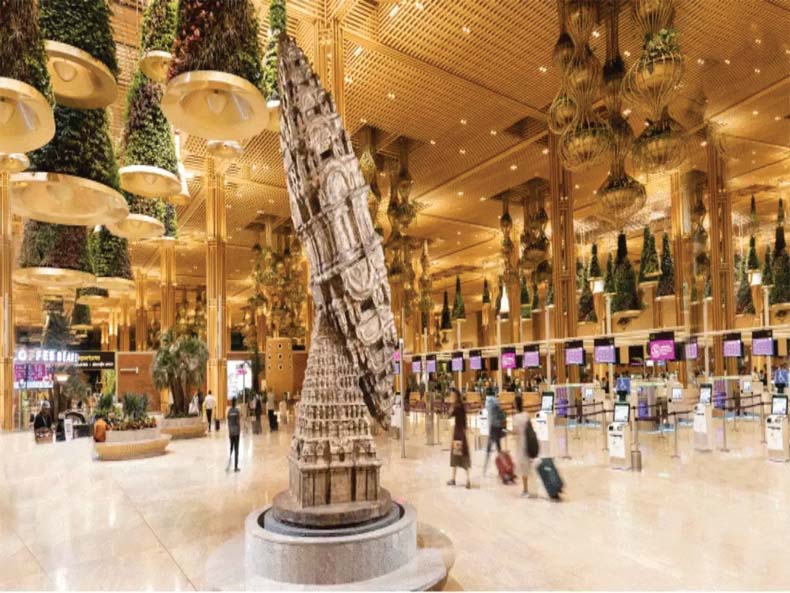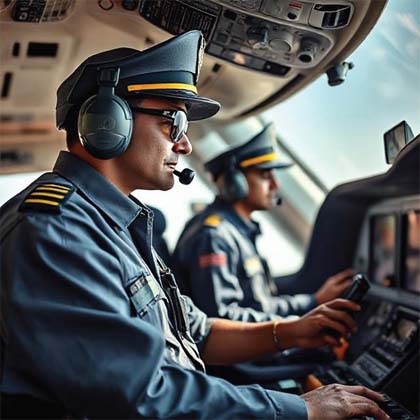Therefore, DGCA office (or its equivalent) is the heart of the civil aviation set up of any country. It has to keep pace with its own growth as civil aviation grows as well as the need to keep pace with development of technology. In fact, in other countries like US, they have extensive research facilities. On top of this ICAO also carries out regular audit of safety and security aspects of their members. It may, therefore, be pointed out that DGCA office needs highly qualified personnel like pilots, engineers, qualified inspectors for various aircrafts and ground equipment. However, in India’s case it is shocking to see the large difference between the sanctioned and filled up strength.

Chairman, International Foundation
for Aviation,Aerospace and Drones
There is no doubt that one sector which outshines other sectors of Indian Economy is the civil aviation sector because of its growth and expansion. While it is only 1.5 % of the total GDP of the economy, its impact on rest of the sectors is very high including employment creation both direct and indirect. According to IATA India it contributes $53.6 billion to GDP, 7.7 million jobs and has had an impressive annual growth of 10.3% on passenger traffic. India is now third largest domestic aviation market in terms of passengers at 241 million behind China and US with 174 million passengers travelling both domestically and internationally. Another feature to note is that less than 5% of the population travel by air and therefore, it will many, many years for the sector to reach maturity. As incomes improve, the switchover from trains to air takes place. Also, growth of regional airports under the UDAN subsidy scheme for new and under-utilised airports is making its impact on deepening the aviation reach for regional economic growth.
This sector has had a tremendous growth in terms of demand from public and was able to meet it after private airlines were allowed to enter as they had the freedom to order any number of new aircrafts without coming to government for approval. With improves incomes we saw a huge double digit expansion of passenger traffic. This was also accompanied by a widening base as more airports were commissioned in the country. From 74 airports in 2014 the number today stands at 157 in 2024 excluding terminals in Defence airports. In order to keep pace with demand, there is a need for expansion of existing airports and developing new airports.
As far as airports and air navigation services in India are concerned this aspect was well taken care of in 1994 by the enactment of the Airport Authority Act which created the Airports Authority of India (AAI), a financially independent authority with its own funding mechanism, not dependent on the annual budget. Consequently, AAI is able to takes care of requirements of Airports and Air Traffic Management and also declare a dividend annually plus pay income tax to the government. This was due to the AAI Act which gave it financial independence by provision of a non- laps-able fund within it. All revenues of all Airports including those of Air Traffic Services (ATS) charges went into this fund. With this AAI did not really need any budgetary support to maintain, improve and build all the civil airports and civil terminals of the country. With privatization of Airports starting in 2010 on long term leasing of airports basis AAI continued to retain 25% share of equity in all leased airports as well as a percentage of revenue share which was negotiated in each case.

The central government has announced a comprehensive plan to develop 50 more airports across smaller cities in India. Second airports are also coming up in major cities like Delhi and Mumbai. New civil terminals are likely to be developed in some of the Air Force airports by AAI. In addition, new equipment for safer landing and takeoff and many more related equipment will be installed. All this will cost money. However, with the non-lapsable or revolving fund of AAI, most can be taken care of and the budgetary support for this will be minimal. Further, AAI can take a loan or float a bond in the market too.
Similarly, the issue of Security of airports is also taken care of. The Central Industrial Security Force is deployed at all airports (except for those flights under Regional Connectivity Scheme which is under State Police) under overall supervision of the Bureau of Civil Aviation Security (BCAS). All its expenses are recovered by Aviation Security Fee (ASF) which is currently about Rs 236 per embarking passenger on domestic flights.
For Airports, there is Passenger Service Fee (PSF) which is again charged on each embarking passenger which includes ASF. The amount of passenger service fee is decided by an independent authority called Airport Economic Regulatory Authority (AERO), a quasi-judicial body.
However, the most important body within the civil aviation sector is the office of the Director General Civil Aviation (DGCA). This office is the main regulator for safety and overall supervision. It licences all Airlines, Airports (recently it suspended the license of Nanded Airport due to serious safety lapses) and pilots, crew and ground engineers etc. It is obliged to carry out inspection airlines and their aircrafts regularly and imposes fine on them them for lapses and even suspend their licenses. It maintains liaison with international organisations (ICAO), IATA and maintains relations with other countries’ civil aviation authorities. It also looks into passenger grievances. It maintains record of serious and not so serious incidents. The Independent Accident Investigation Bureau takes over from DGCA when a very serious accident takes place. Therefore, DGCA office (or its equivalent) is the heart of the civil aviation set up of any country.

It has to keep pace with its own growth as civil aviation grows as well as the need to keep pace with development of technology. In fact, in other countries like US, they have extensive research facilities. On top of this ICAO also carries out regular audit of safety and security aspects of their members. It may, therefore, be pointed out that DGCA office needs not only highly qualified personnel like pilots, engineers, qualified inspectors for various aircrafts and ground equipment. However, in India’s case it is shocking to see the large difference between the sanctioned and filled up strength.
DGCA has a sanctioned strength of 1,664 posts, as of August 2025, only 553 posts are filled, resulting in a significant manpower shortfall of nearly 50%. This chronic understaffing, highlights a gap between available and required personnel. This was also recently called out by a Parliamentary panel as an “existential threat” to aviation safety in India. Such personnel are neither available easily in the market nor are happy to come and work for the government at their salary structure. Their recruitment cannot easily be done through the government agency of Union Public Service Commission (UPSC) or similar bodies. The process of such a recruitment takes about a year which is too long. As long as Air India was in public sector it was a standard practice to get qualified pilots, engineers and other technical posts on a deputation to DGCA and Air India would continue to pay them their salary and perks. However, now with private airlines, it is neither possible nor acceptable.
So, what is the way out of this imbroglio? Since the Office of DGCA/ Ministry of Civil Aviation is unable to solve this problem, it was felt to convert DGCA into an independent body with its own recruitment power and independent non-lapsable funds like AAI will solve the problem. Even if the government gives it funds, they will form a grant to an independent body like AAI, which occasionally gets budgetary support for special projects of government.
Around 2012, Ministry of Civil Aviation (MOCA), seeing the tremendous growth of civil aviation and the incapacity of the existing institutions to cope with the demands of the growing industry, decided to create a Civil Aviation Authority (CAA) which would be on similar lines as AAI with a non- lapsable fund and freedom from recruitment from UPSC/ SSC. The matter of creation of a CAA was considered to be the way out as CAA will continue to deal with all issue dealt earlier by DGCA as enumerated earlier. It was, therefore, decided to request ICAO for a consultant to draft a CAA structure with its rules and bye-laws which would also be in alignment with ICAO Standards. Consequently, government selected a consultant through ICAO by the name of Dr Ludwig Weber, former Director Legal at ICAO who was also a Professor at the Institute of Air and Space Law at McGill University, Montreal, Canada. Dr Weber worked with MOCA/ DGCA and prepared a draft legislation for creation of a CAA. This draft was approved by the then Cabinet and a bill for the Civil Aviation Authority was introduced in the Lok Sabha on August 20, 2013. The bill was referred to the Parliamentary Standing Committee, which held meetings on September 24, 2013, and January 3, 2014. Based on the committee’s recommendations, a modified bill was approved by the Union Cabinet on February 12, 2014. The bill aimed to grant greater financial, administrative, and operational autonomy to the aviation safety regulator. However, a little after this in 2014 there was a change in government the new government did not follow up on it.
Such a CAA was and still remains the real answer to current crisis in regulating the growing sector of civil aviation in India in a safe and orderly manner and reducing the chances of an unfortunate incident or accident to which the Standing Committee on Transport, Tourism and Culture of the Parliament has alluded to. This will ensure a seamless incident free growth of our civil aviation sector. This should be implemented now without any delay.








